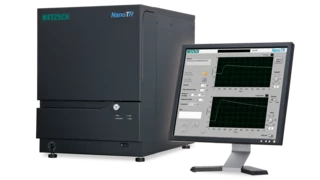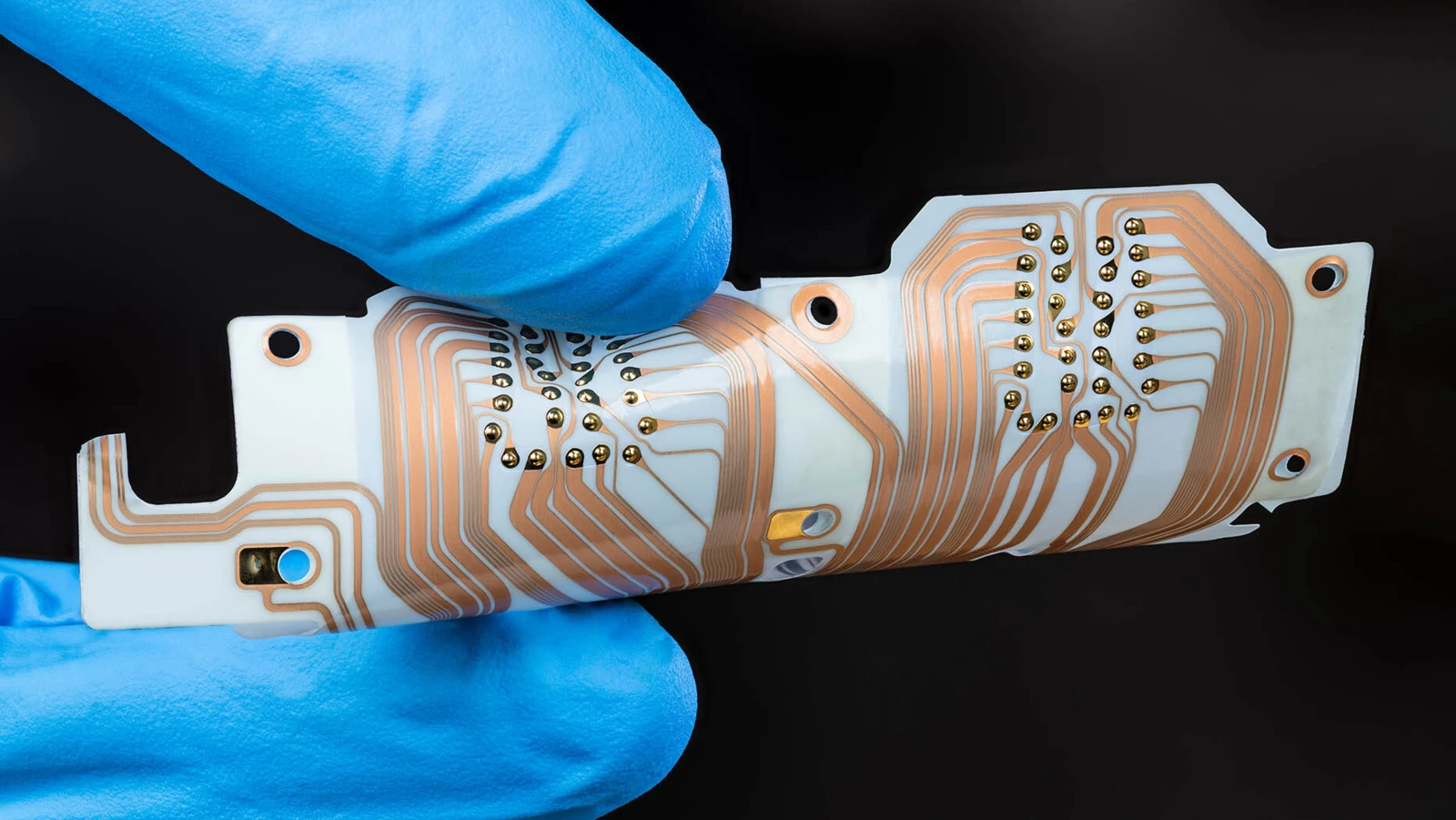
12.06.2023 by Aileen Sammler
NanoTR and PicoTR - Instrument Line for the Thermal Characterization of Thin Layers
Nanotechnology is gaining high importance in various fields. In the areas of communication, medicine, environment, energy, aerospace, etc., manufacturers are packing more and more into smaller and smaller spaces, and the heat released is becoming an ever-greater problem. Thus, knowledge of the thermo-physical properties of the materials plays a major role in enabling optimal heat flow. Using NETZSCH Time DomainA time domain analysis is based on changes in physical signals related to time. A time-domain graph shows how a signal changes over time. In the case of thermoreflectance or the laser flash method, the detector signal (voltage change) is recorded – at a minimum – over the time range between the energy input and the signal maximum (e.g., RF mode) or as a function of the expected heat diffusion time (e.g., FF mode).Time Domain ThermoreflectanceThermoreflectance is a method for determining the thermal diffusivity and thermal conductivity of thin films with thicknesses in the nanometer range.Thermoreflectance Methods, we can measure them.
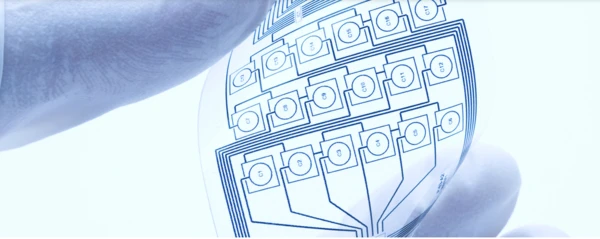
Thermal Management of Thin Films
The determination of the Thermal ConductivityThermal conductivity (λ with the unit W/(m•K)) describes the transport of energy – in the form of heat – through a body of mass as the result of a temperature gradient (see fig. 1). According to the second law of thermodynamics, heat always flows in the direction of the lower temperature.thermal conductivity and Thermal DiffusivityThermal diffusivity (a with the unit mm2/s) is a material-specific property for characterizing unsteady heat conduction. This value describes how quickly a material reacts to a change in temperature.thermal diffusivity of materials can be realized with the established laser/light flash method (LFA). This LFA method can typically be used for samples with a thickness of between 0.1 mm and 6 mm. However, with ever-advancing designs in electronic instruments and the associated demand for efficient thermal management, it is more important to obtain precise measurements of the Thermal DiffusivityThermal diffusivity (a with the unit mm2/s) is a material-specific property for characterizing unsteady heat conduction. This value describes how quickly a material reacts to a change in temperature.thermal diffusivity, Thermal ConductivityThermal conductivity (λ with the unit W/(m•K)) describes the transport of energy – in the form of heat – through a body of mass as the result of a temperature gradient (see fig. 1). According to the second law of thermodynamics, heat always flows in the direction of the lower temperature.thermal conductivity and transition Contact ResistanceAccording to the second law of thermodynamics, heat transfer between two systems always moves in the direction from higher to lower temperatures. The amount of thermal energy transferred by heat conduction, e.g., through a wall of a building, is influenced by the thermal resistances of the concrete wall and the insulation layer.contact resistance into the nanometer range. In this application area, materials range in thickness from 10 nm to 2 µm. They may take the form of phase change storage (PCM), thermoelectric thin films, light-emitting diodes (LED), dielectric interface layers or even transparent conductive films (PFD).

The thickness of nanometer-thin films is often less than the typical grain size. Consequently, their thermophysical properties differ significantly from the values of bulk material. With decreasing grain size (film thickness), the Thermal DiffusivityThermal diffusivity (a with the unit mm2/s) is a material-specific property for characterizing unsteady heat conduction. This value describes how quickly a material reacts to a change in temperature.thermal diffusivity decreases – especially in the area of the mean free path of electrons. Therefore, the Thermal DiffusivityThermal diffusivity (a with the unit mm2/s) is a material-specific property for characterizing unsteady heat conduction. This value describes how quickly a material reacts to a change in temperature.thermal diffusivity of bulk material can be several times higher than that of thin films. Due to this fact, it is essential to determine the thermal diffusivity on thin films as well.
Time Domain Thermoreflectance by Pulsed Light Heating: The Laser Flash Method for Thin Films
NanoTR and PicoTR are the thermal analysis systems of choice for thin films. They are the world’s first analyzers for providing high-precision measurements on thermophysical properties of metallic, oxide, organic and other films, originally developed by the National Metrology Institute of Japan (NMIJ) of AIST. These instruments enable rapid and highly precise measurements of the thermal diffusivity, thermal effusivity, Thermal ConductivityThermal conductivity (λ with the unit W/(m•K)) describes the transport of energy – in the form of heat – through a body of mass as the result of a temperature gradient (see fig. 1). According to the second law of thermodynamics, heat always flows in the direction of the lower temperature.thermal conductivity and interfacial thermal resistance for films ranging from several nanometers to several tens of micrometers in thickness, formed on any substrate.

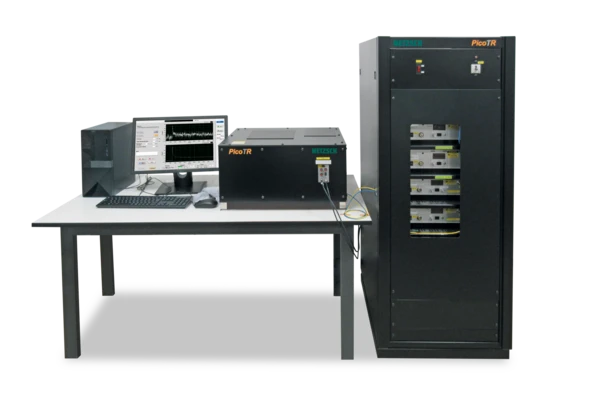
How Does It Work?
The front or rear surface of a thin film on a substrate is heated by a pulsed laser source (pump laser). At the same time, the front surface of the thin film is irradiated by a laser source for temperature monitoring (probe laser). Combined with the photo detector, the reflectivity can be evaluated as a function of time and the curve of the temperature rise can be obtained. By fitting the mathematical model to the history curve of the temperature, the thermal diffusivity can be determined.
By measuring the constant energy emitted by a sample laser and reflected of the sample, the temperature changes of the surface can be recorded accurately and faster than with conventional IR radiation detectors.
The determination of the thermal diffusivity and interfacial thermal resistance can be realized by rear heating/front detection (RF mode) and Front Heating/Front Detection (FF mode).
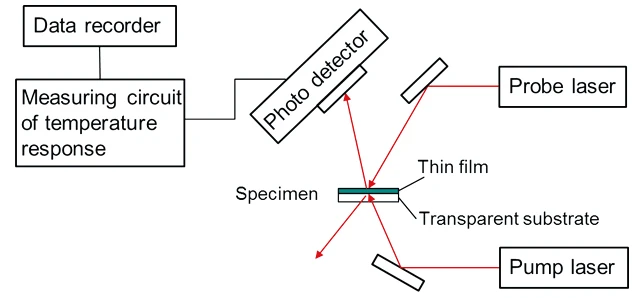
Both NanoTR and PicoTR allow for absolute measurements of the thermal diffusivity of thin films in a thickness range of several 10 μm down in the nanometer range.
Your Benefits at a Glance:
- Thermophysical analysis of thin films, including multilayer structures: NanoTR and PicoTR can measure the thermal diffusivity, thermal effusivity and conductivity of thin films and the interfacial thermal resistance between thin films of multi-layer films. NanoTR and PicoTR enable highly sophisticated thermal designs for semiconductor devices.
- High-speed measurement: NanoTR’s state-of-the-art signal processing technology allows for high-speed measurements.
- RF and FF Configurations: NanoTR and PicoTR can be configured for both RF (rear heating / /front detection) and FF (front heating / /front detection) measurements, enabling measurement of a wide variety of samples.
- High-Precision Analysis: These instruments provide high-precision measurements of the thermophysical properties of metallic, oxide, organic and other films. The high accuracy can be confirmed by NMIJ Certified Reference Materials (NMIJ CRMs).
- Widest thickness range: In combination with our LFA instruments, we are able to offer solutions for thin films in the nanometer range up to bulk materials in the millimeter range.
